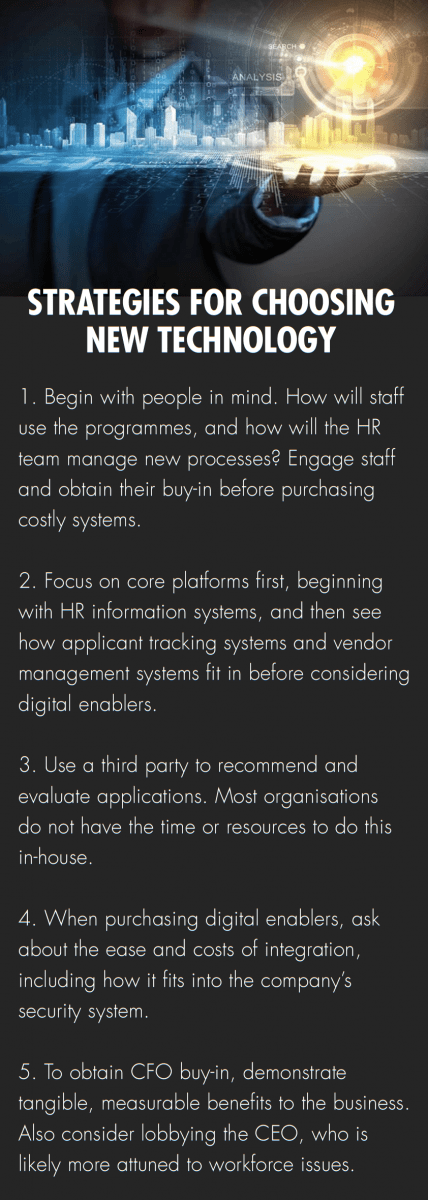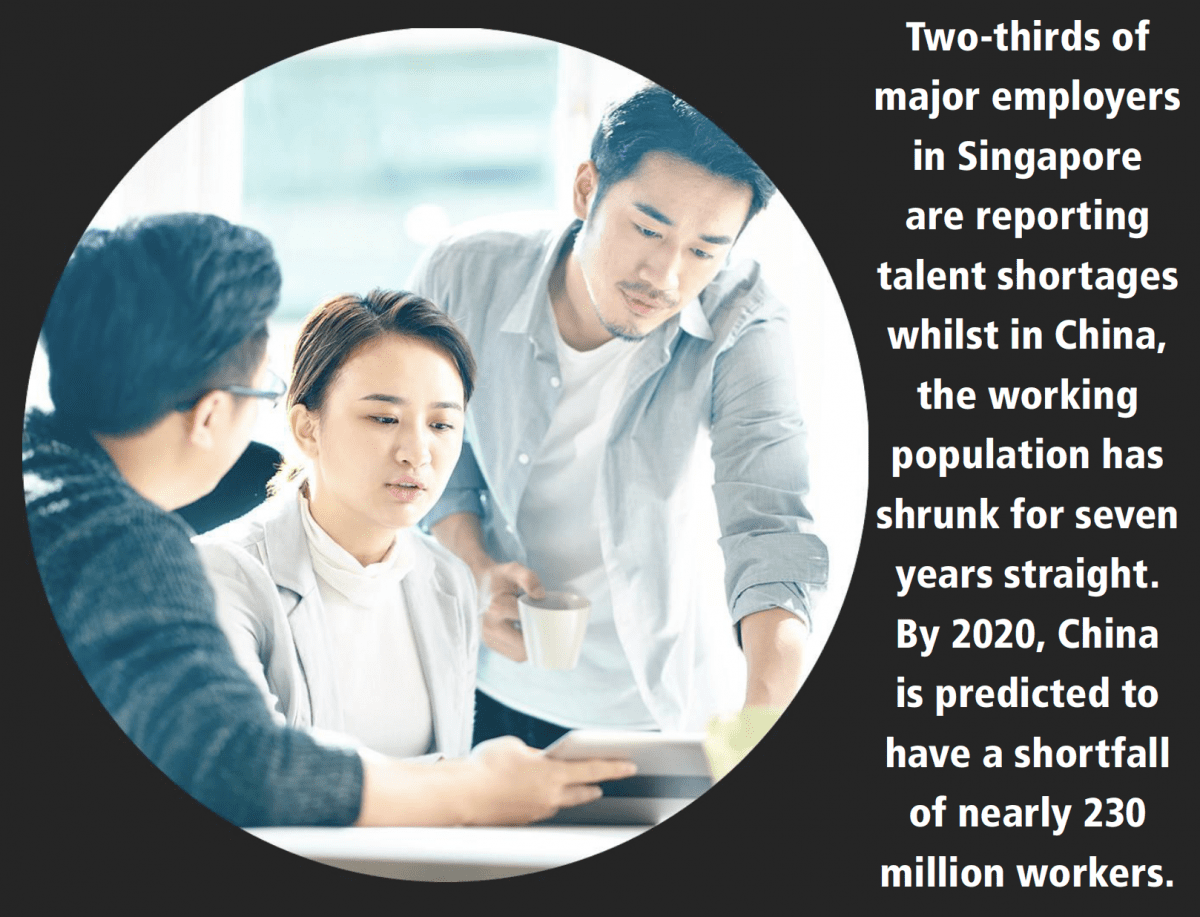Organisations in Asia need to adopt a five-pronged talent strategy to contend with rising skills shortages.
By Michael Switow
A severe talent crunch is leaving key positions unfilled across Asia-Pacific.
“How do you get more people? How do you attract more applications?” asks Arun Vignes Radhakrishnan, TCS‘ regional HR head for Hong Kong, Taiwan, and Macau.
Hong Kong is the third most difficult market in the world to find skilled employees, according to research presented by Alexander Mann Solutions at the 2019 HRO Today Forum APAC. Two-thirds of major employers in Singapore are reporting talent shortages whilst in China, the working population has shrunk for seven years straight. By 2020, China is predicted to have a shortfall of nearly 230 million workers.
“If we look at this skill shortage, traditional talent acquisition -going out and hiring on skills and experience -is not going to work. You can’t find the skills. They don’t exist,” says Neil Jones, regional head of APAC at Alexander Mann Solutions.
This shortfall is leading talent acquisition experts to embrace new strategies.
“The modern thinking should be around hiring for curiosity, potential, and adaptability to change,” says Jones, who is based in Singapore and has worked in talent acquisition for more than two decades. Talent acquisition leaders need to begin thinking about “managing segments of work,” not just people, he argues. A five-pronged total workforce strategy can provide some insight: buy, build, borrow, partner, and automate.
First Prong: Buy
Katie Ng, Hewlett-Packard Enterprise‘s Hong Kong head of human resources, is asking her managers to adopt a new mindset. Even if they can find someone with the right experience, she encourages them to search for candidates with the potential to become future leaders instead.
“We ask managers to hire for the future, not for now,” she says. Her company, which spun off from Hewlett-Packard three years ago, offers cloud and financial services. In one sense, it’s a new business, yet at the same time, much of the staff has been working with the company and its predecessor for years.
Then Build, Borrow, and Partner
Hiring “for the future” and “for curiosity” necessitates that companies invest in building competencies internally. But traditional training and courses may not be the best way to proceed. Research released by Deloitte last year shows that when people are put into teams with peers in a real-time environment -what Deloitte calls “connected learning” -productivity increases by nearly 40 per cent.
Determining who receives training can present its own set of challenges, particularly in markets like Australia where more than one in 10 workers are independent contractors.
“We wrap our arms around the permanent workforce and give them all the benefits and training, but contractors and temp workers are also really critical to achieving the goals of your business,” says Tara Knobel, Alexander Mann’s Melbourne-based APAC director of operations and solution design. “That’s where we find it very challenging. All these people contribute to the total success of your organisation but are treated and managed in very different ways.”
A closer relationship between procurement and HR teams may help address this disconnect. Jones sees these two departments working more closely together now than just a few years ago, though a lack of clear data still poses challenges.
“It used to be marriage guidance counsel between HR and procurement. Now we see much more alignment and forward planning. But I still haven’t seen a silver bullet of systems that gives you a uniform set of data for contract and perm. That’s going to be essential to really crack this total talent problem,” he says.
Lastly, Automate

“We are seeing a hyper-acceleration of a digital agenda and organisations that don’t grasp it will be in trouble,” Jones says. “One in four companies have no plans for digital transformation. I’m pretty sure they’re going the same way as Blockbuster and Kodak.”
One of the biggest challenges faced by talent acquisition leaders when discussing digitalisation and new systems is obtaining leadership support, particularly in firms where the leadership team is older.
“A lot of companies in Asia are being dragged kicking and screaming rather than actually saying, ‘yes, this is the way to go,'” observes Independent Audit‘s Asia Director Phillip Baldwin. “It always comes down to the leadership. Getting that total buy-in has got to come from the top. They often know they’ve got to digitise, but they’re not exactly sure what it is.”
Shirley Fong, Li & Fung‘s vice president for HR, says that this uncertainty about new technology can lead CEOs to embrace digitalisation in front of the board but slow it down behind the scenes. But in other cases, leaders dive in too fast.
“Sometimes bigger companies bite more than they can chew, so we tend to do a lot of these digital initiatives at a very large scale,” observes Fong’s colleague, Assistant HR Manager Sukriti Sabherwal. “You don’t have to roll out the entire gamut of digital transformation technologies that are available. Do a pilot.”















